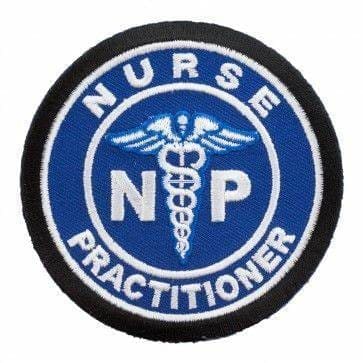
by Dr Alex Jimenez DC, APRN, FNP-BC, CFMP, IFMCP | Fitness, Health, Wellness
It’s no secret that sitting at a desk all day isn’t good for you. A sedentary lifestyle can lead to weight gain, which may then lead to a host of other issues. Research has shown that sitting too much throughout the day can lead to a number of different health problems, including obesity, heart problems, and diabetes.
However, there are things you can do to offset the health risks of sitting at your desk, such as getting up to take frequent walks. But even if you can’t leave your chair, there are even plenty of movement exercises you can do right from your desk, such as chair yoga. You could also take advantage of the time to work on some mobility training—a form of exercise that focuses on improving your stability, range of motion, and loosening your muscles so you can perform better during any workout.
Frank Baptise, founder of Frankly Fitness, is a big fan of mobility training as an effective way to help promote healthy joints, balance, and flexibility in your body. Here, he demonstrates six simple yet effective moves to try at your desk. All you need is a stress ball and a desk chair!
Don’t have time to watch? Here’s a quick rundown of Baptiste’s go-to mobility moves:
Glute and piriformis: self-myofascial release
Roll and apply pressure. Hold for 5-10 deep breaths.
Peck roll
Roll and apply pressure. Hold 5-10 deep breaths.
Plantar fascia roll
Roll and apply pressure. Hold for 5-10 deep breaths.
Modified chair downdog
Hold for 3 breaths. 3-5 reps.
Modified lunge with rotation
Hold for 3 breaths. 3-5 reps each side.
Figure four squat
Hold for 3 breaths. 3-5 reps each side
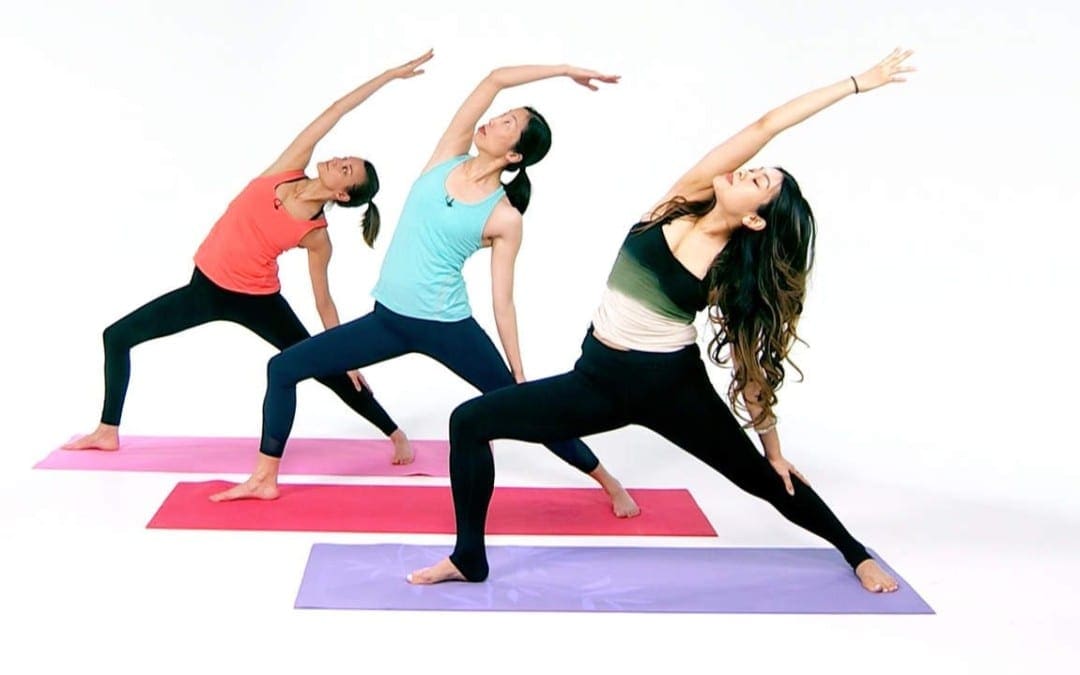
by Dr Alex Jimenez DC, APRN, FNP-BC, CFMP, IFMCP | Fitness, Health, Wellness
Feeling stressed? On any given day, you’re likely bombarded with many different stress-inducing situations. Perhaps it’s a challenging project at work, a fight with your partner, or just someone who unapologetically bumped into you on the street.
Life is filled with challenges and frustrations like these. But the good news is there are plenty of smart strategies that can help you refocus your energy so you feel calm and peaceful instead of frazzled. Take meditation and mindfulness, for example—both practices are all about checking in with yourself and filtering stress out of the mind. And if meditation isn’t your thing, exercise is also a great way to help release your daily frustrations and send a healthy dose of feel-good endorphins to your brain.
WATCH THE VIDEO: A 5-Minute Meditation to Help You Find Your Calm Now
Better yet, combine two of these mindful practices: meditation and exercise. Yoga is perfect for this, especially if it’s a calming flow that can quiet your mind while simultaneously strengthening your muscles. By forcing you to pay close attention to your breath, yoga helps stop your racing thoughts.
Watch this video for a calming 10-minute yoga flow from Kirby Koo of Yoga With Kirby. It focuses on the importance of your breath, so you can calm your mind and banish stress.
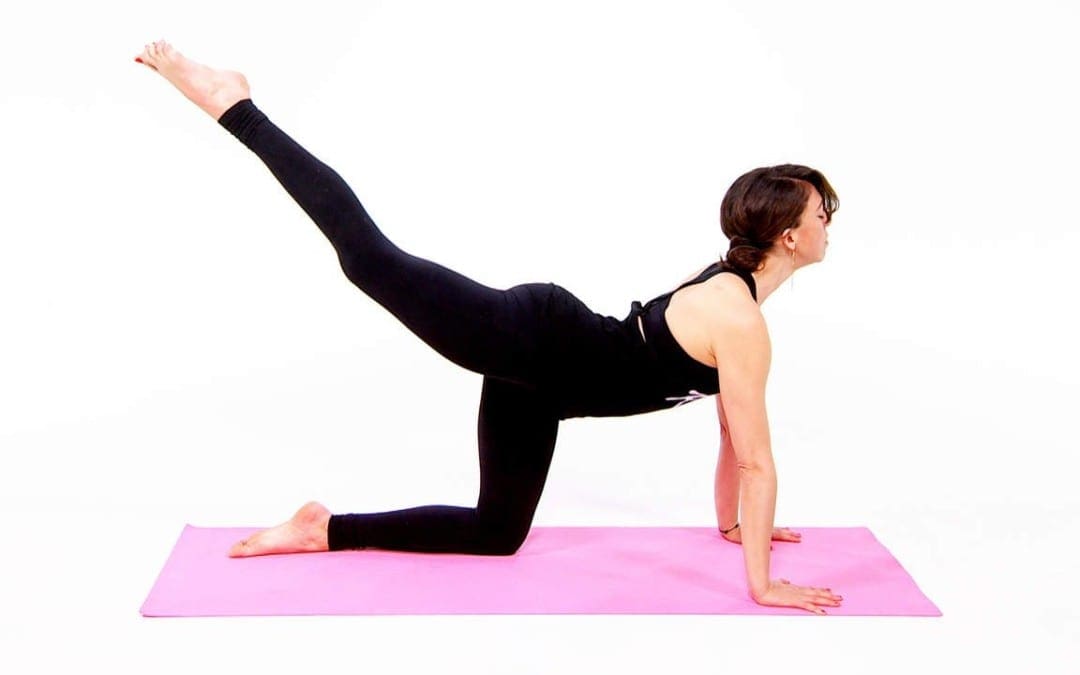
by Dr Alex Jimenez DC, APRN, FNP-BC, CFMP, IFMCP | Fitness, Health, Wellness
Anyone who struggles with back pain knows how distressing it can be. Whether it�s soreness that impedes your sleep or aches that hurt your productivity while you sit at your desk at work, back pain is hard to ignore no matter what position you�re in.
The good news? Yoga can be a surprisingly helpful remedy. In this video, yoga expert and Retox author Lauren Imparato takes you through a 20-minute yoga flow designed to soothe and prevent back pain. Yes, please!
�How you sit, how you sleep, something you ate, how you moved,� can all contribute to upper or lower back issues, Imparato explains. And while treatment options do exist�such as massage and acupuncture�studies have shown that yoga may actually be more effective than these and other alternatives. Research from the Annals of Internal Medicine found that people with chronic lower back pain saw more improvement of their symptoms after a 12-week yoga class compared to those who only received medicine or physical therapy to treat their pain.
RELATED: 4 Surprising Cures for Back Pain
Want to experience the same relief? In this video, Imparato will first help you release tightness and tension in your back by guiding you through classic stretches like cat and cow. Next, she�ll show you how to do a quick, equipment-free flow that works to stabilize the spine and strengthen the muscles in your core that support it. (Hi, toned abs!) Watch the clip above for a yoga routine that not only reduces back pain but crafts long, lean muscle at the same time.
Also check out our sister company: Best Yoga Routines for Sleep. �This is a great article that helps you doze off…. WAY Better…
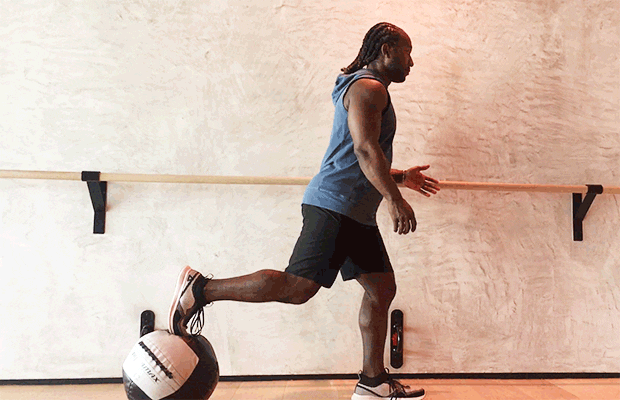
by Dr Alex Jimenez DC, APRN, FNP-BC, CFMP, IFMCP | Fitness, Health, Wellness
Photo: Twenty20
This is a partial workout. You can find the rest of the moves at Life by Daily Burn.
When you look at a slam ball, leg and glute exercises may not be the first thing that comes to mind. But incorporating this soft weighted ball into your booty routine will work your lower half hard. Weak hamstrings, glutes and hips can lead to knee and back pain. So if you’re looking for a way to strengthen these muscles, while building power, the slam ball can kill two birds with one big, squishy ball.
Gerren Liles, PROJECT by Equinox master trainer and Reebok ONE Elite ambassador likes to use it for a quick leg workout. “The slam ball is a simple tool that allows you to move in multiple dimensions and directions, and can serve as a load to develop strength and power,” Liles says.
In addition to tightening and toning, the slam ball creates an unstable environment that forces your body to work harder to balance weight. (Stability challenge, anyone?) And because you’ll move in different planes of motion, you’ll work your core, legs and arms, too.
“The ball can be used as a prop to challenge your stability, as you’ll see in the Bulgarian squat and soccer tap drill. It can also be used as a form of resistance in the squat with front push and hamstring curls,” Liles explains. Check out just how versatile this space-efficient piece of equipment can be in the six exercises below.
RELATED: The 30-Minute Slam Ball Workout
6 Slam Ball Exercises That Build Lower-Body Strength
These moves will not only blast your lower half, they’ll help improve your ankle mobility, agility and reflexes. Add some intensity, and they’ll get your heart rate up, too, Liles says. Do 8 to 10 reps of each exercise for two sets.
GIFs: Tiffany Ayuda / Life by Daily Burn
1. Bulgarian Squat
This variation of the squat challenges your balance. To keep your foot from rolling off the ball, engage your core so you can move with more control, Liles says.
How to: Stand with your feet together in front of a slam ball. Step your right foot back and place your toes on top of the ball (a). Keeping your weight in your left heel, slowly lower your body into a lunge, bending your right knee towards the floor. Your left knee should form a 90-degree angle to the floor. Be sure your left knee is stacked above your ankle (b). Straighten both legs and return to standing (c).
RELATED: 6 Squat Variations for Total-Body Strength
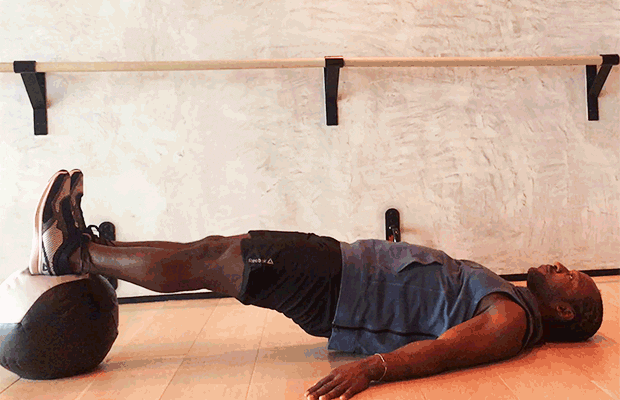
2. Lying Hip Bridge With Hamstring Curl
Take your glute bridges to the next level with this variation that also strengthens your hamstrings. The lack of surface area on the ball is an added challenge to making the movement slower.
RELATED: 5 Exercise Machines That Aren’t Worth Your Time
How to: Lay on your back with your hips lifted off the floor and your calves and heels on top of the ball. Plant your hands on the floor at your sides (a). Draw your heels in toward your butt with control, bending your legs. Your hips should elevate even higher as you squeeze your glutes to bring your heels in (b). Slowly extend your legs back out to the starting position (c).
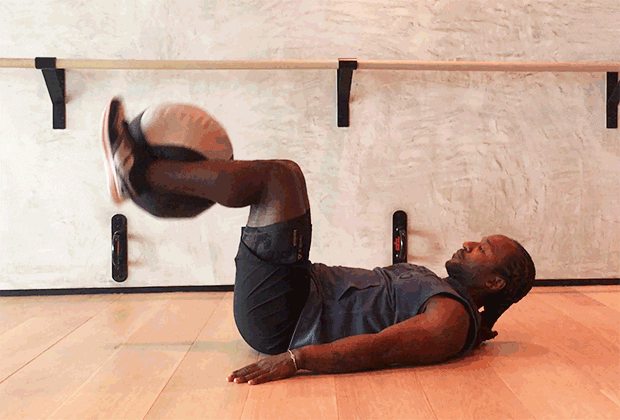
3. Lying Quad Extension
Your quads, hamstrings and glutes are some of the biggest muscles groups in your body. This simple move fires up all three, helping you torch more calories per workout.
How to: Lie flat on your back and place the ball between your calves with your knees bent. For an added core challenge, you can lift your head off the floor and bring your chin towards your chest (a). Without moving your hips, bring your legs straight up towards the ceiling (b). Then, bend your knees until the ball touches the back of your legs. Remember to press your low-back into the floor throughout the entire movement (c).
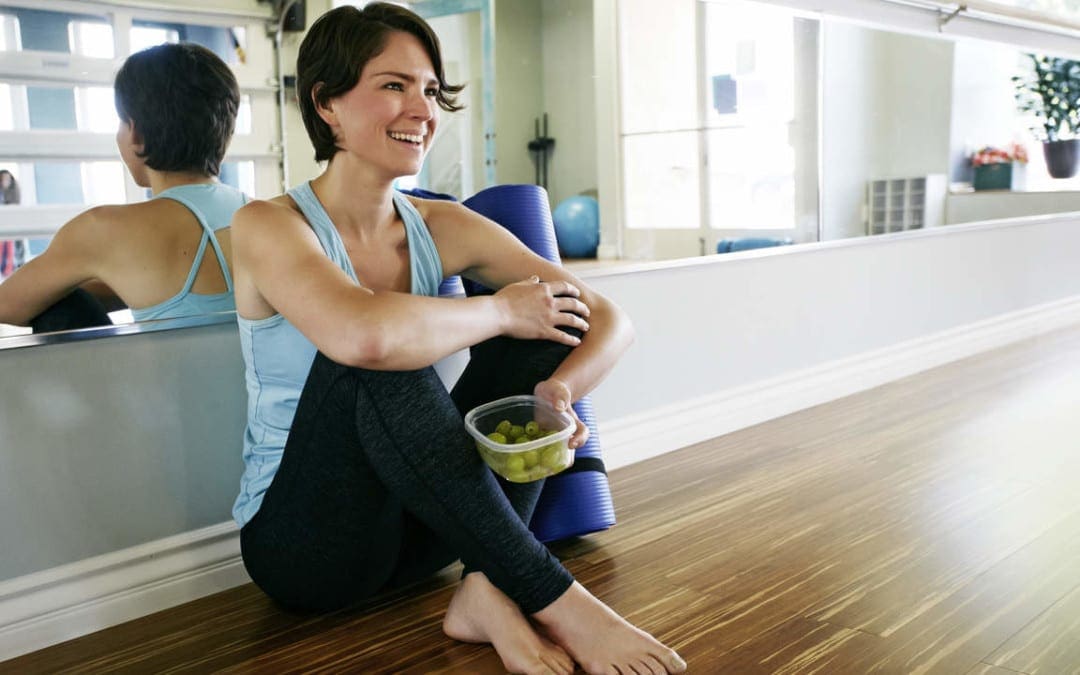
by Dr Alex Jimenez DC, APRN, FNP-BC, CFMP, IFMCP | Fitness, Health, Wellness
When your metabolism is running like a well-oiled machine, your body is working for you. Not only can it make maintaining (or losing) weight a little easier, but maximizing your system’s calorie-burning engine will also help you feel more energetic, active, and alive. To figure out how to get it to that happy place, incorporate these everyday eating and exercise habits into your regular routine.
Do more heavy lifting
It’s so easy to glance at the “calories burned” figure on the cardio machine and then add more time to your workout to make the number higher. But if you want your metabolic furnace to burn hotter during the day, you’re going to need to add muscle. “Muscle burns more calories than fat,” says Alissa Rumsey, RD, CSCS, author of Three Steps to a Healthier You. She advises fitting in a total-body strength workout two to three times per week, using a weight that’s heavy enough to make the 10th rep very difficult.
RELATED: 23 Snacks That Burn Fat
Eat protein in the morning and afternoon
You already know that cranking your metabolism means filling your dinner plate with quality protein (in the form of lean meats, eggs, fish, legumes, and yogurt). Thing is, it’s easy to get that chicken breast or piece of salmon in at dinner. What’s harder is remembering to eat a high-protein meal at breakfast and lunch, says Rumsey, when you’re typically on the go and too rushed to do much more than grab a piece of fruit or carb-heavy sandwich.
Getting good protein in the a.m. and p.m. “will also help you maintain and build muscle as long as you consume it before and after regular weight training workouts,” she says. Plus, research suggests that your body works harder to break down and process calories from protein than from fat or carbs, resulting in a slight bump in metabolism. And don’t forget, protein promotes satiety. You’ll feel fuller and burn more calories breaking it down. Double win.
Dial back your work stress
No one has to tell you that chronic stress is unhealthy. But stress at work is especially detrimental. One study of women with a history of mood disorders in the journal Biological Psychiatry found that those who experienced extra stress during the workday burned 104 fewer calories in response to a higher-fat meal compared to women who were not stressed. As the researchers discovered in a later study, stress can change the way your body metabolizes fats, even reducing the benefits of eating a healthy meal.
Snack before bedtime
You heard that right—it’s time to consider disregarding all those warnings about not eating after 8 p.m. “Conventional wisdom says that food you eat right before bed will sit in your stomach all night long, which will result in packing on the pounds,” says Cassie Bjork, RD, author of Why Am I Still Fat?. Instead, the right bedtime snack “will actually boost your metabolism by keeping your blood-sugar levels stable, which allows your pancreas to secrete the fat-burning hormone glucagon,” she says.
RELATED: Ultimate Metabolism-Boosting Workout
Hit the sheets early
Sleep may be the last thing on your to-do list, yet it deserves priority status, and here’s one out of a million reasons why. Not getting enough rest has a disastrous effect on your metabolism, prompting you to misread your system’s hunger cues and revving your appetite. As one study suggests, this appetite boost happens when your body calls for extra calories to fuel the additional time you’re awake—and that leads you to overeat. The National Sleep Foundation recommends adults snag seven to nine hours of shuteye per night. Give it a try tonight.
To get our best wellness advice delivered to you inbox, sign up for the Healthy Living newsletter
Get up and move—right now
Maybe you put in your 45 minutes of daily heart-pumping exercise on the regular. But if you spend the rest of the day with your butt planted firmly in a chair, you’re keeping your metabolism in stall, says Rumsey. “It’s important to move as much as possible,” she says, not just because movement burns calories but because it keeps your metabolism on high.
So make an effort to get up and stand at your desk, head outside to eat lunch and then taking a stroll, or walk or down the stairs when possible. Moving more during the day, even if you’re just heading down the halls of your office or taking the long route to the parking lot where you left your car, will keep your metabolism running, she says.
Stop counting calories
“People often think that restricting calories boosts metabolism, but this does the complete opposite,” says Bjork. Here’s why: calories are the energy that fuels your body and helps your metabolism run efficiently. Take in too few, and you’ll start to feel fatigued and hangry. Ensuring that you’re filling up your plate with lean protein (like fish or meat), healthy fats (avocado, olive oil, almond butter), and lots of fruits and veggies will deliver high-quality, nutritionally dense calories to your body. That helps your metabolism run optimally, in turn burning calories rather than conserving them.

by Dr Alex Jimenez DC, APRN, FNP-BC, CFMP, IFMCP | Natural Health, Wellness
A new enzyme pill could be a game changer for gluten-sensitive people, according to the authors of a new study.
The enzyme breaks down gluten in the stomach and prevents most of it from reaching the small intestine. So it could allow gluten-sensitive people to eat small amounts of the protein (found in wheat and other grains) without suffering consequences such as bloating, diarrhea, and abdominal pain.
For the study, the researchers tested the effects of an enzyme called aspergillus niger-derived prolyl endoprotease (AN-PEP) in 18 patients with gluten sensitivity. Each participant ate a serving of oatmeal with two gluten-containing wheat cookies along with either a high- or low-dose of AN-PEP or a placebo pill.
Researchers then measured gluten levels in the stomach and small intestine over a three-hour period.
In both the high- and low-dose AN-PEP groups, the researchers found that AN-PEP reduced levels of gluten in the stomach by 85 percent compared to placebo.
They also found that the enzyme reduced gluten levels in the duodenum (the first part of the small intestine) by 81 percent in the high-dose group and by 87 percent in the low-dose group.
The findings were presented at Digestive Disease Week 2017, the largest international gathering of experts from the fields of gastroenterology, endoscopy, hepatology, and gastrointestinal surgery.
“This substance allows gluten-sensitive patients to feel safer, for example, when they are out with friends at a restaurant and can’t be sure whether something is 100 percent gluten-free,” says Dr. Julia König, Ph.D., the study’s lead author and post-doctoral research fellow at the School of Medical Sciences at University of Örebro, Sweden.
“Since even small amounts of gluten can affect gluten-sensitive patients, this supplement can play an important role in addressing the residual gluten that is often the cause of uncomfortable symptoms.”
Previous research has demonstrated that AN-PEP can break down gluten when it is combined with a liquid meal and administered through a feeding tube. The new study is the first to study the effects of AN-PEP tablet in combination with a normal meal.
“Studies show that even when following a gluten-free diet, unintentional gluten intake can still occur, depending on how strict a gluten-free dieter is,” says König.
“Our results suggest that this enzyme can potentially reduce the side effects that occur when gluten-sensitive individuals accidentally eat a little gluten. We are not suggesting that AN-PEP will give these individuals the ability to eat pizza or pasta, sources of large amounts of gluten, but it might make them feel better if they mistakenly ingest gluten.”
Gluten is a protein found in grains such as wheat, rye, and barley, as well as medicines, vitamins, and supplements.
In addition to gastrointestinal problems, gluten sensitivity is associated with symptoms such as fatigue, muscle cramps, and leg numbness.
Despite some similarities, gluten sensitivity is different from celiac disease, a serious, inherited auto-immune disorder caused by gluten exposure. Unlike people with celiac disease, those with gluten sensitivity do not develop gluten antibodies and their immune systems do not mistakenly attack and damage their small intestines.
According to the National Foundation for Celiac Awareness, about 18 million Americans are affected by non-celiac gluten sensitivity, also known as gluten intolerance.
Gluten sensitivity is poorly understood. Because there are no specific tests to diagnose the condition, doctors must rule out other possible causes of a patient’s symptoms such as celiac disease and wheat allergy.
To confirm gluten sensitivity, doctors usually place patients on a diet that eliminates gluten to see if their symptoms improve. This is followed by an “open challenge” (a monitored reintroduction of gluten-containing foods) to see if their symptoms worsen.
König notes that her team did not test the enzyme on celiac disease patients, because even small amounts of gluten can cause long-term harm in these individuals.
Because of that, she does not recommend celiac patients view this enzyme as a way to start eating any gluten.

by Dr Alex Jimenez DC, APRN, FNP-BC, CFMP, IFMCP | Turmeric
Turmeric is native to India and Southeast Asia. In India, turmeric has been used in Ayurvedic medicines due to its therapeutic properties,�as a disinfectant and treatment for laryngitis, bronchitis, and diabetes. Turmeric is derived from the rhizomes (underground stems) of the plant Curcuma longa, a member of the ginger family.
Curcumin is the most active constituent of turmeric, making up between 2-6%�of this spice. It�has powerful antioxidant and anti-inflammatory properties.
The major constituents of turmeric includes:
- Essential oils such as cineole, termerone and cymene
- Curcuminoids such as curcumin and desmethoxycurcumin
- Important body minerals such as potassium, manganese, copper, iron, zinc and magnesium
- Vitamins B3, B6, C, E and K
- Soluble and insoluble dietary fiber
Turmeric is used�for inflammatory disorders, including arthritis, tendonitis, and autoimmune conditions. Take 400-600mg of turmeric extract 3�times per day or as directed on the product label. Look for products standardized for 95% curcuminoids. Neither curcumin nor turmeric taken orally is well absorbed unless taken with black pepper or piperine. When shopping for supplements, make sure that the one you choose contains black pepper extract or piperine. Be patient when taking turmeric supplements, the full benefits may not be apparent for eight weeks.
Some health benefits of�turmeric:
-
Chronic Inflammation�and Pain
In 2009, a study was published in the Journal of Alternative and Complimentary Medicine, which compared the pain relieving effects of curcumin (the active ingredient in turmeric) and ibuprofen. It was found that the curcumin provided equally effective or better results as the ibuprofen. In�2006, a study showed turmeric was more effective at preventing joint inflammation and�reducing joint inflammation than NSAIDS.
-
Rheumatoid Arthritis
Due to its high anti-inflammatory properties, turmeric is highly effective at helping people manage rheumatoid arthritis (RA). A recent study out of Japan evaluated its relationship with interleukin (IL)-6, the inflammatory cytokine known to be involved in the RA process, and discovered that curcumin �significantly reduced� these inflammatory markers. This suggests that regular turmeric use could be a potent strategy to prevent the onset of RA from developing.� In�2010 a clinical trial found that a turmeric supplement called Meriva (standardized to 75 percent curcumin combined with phosphatidylcholine) provided long-term improvement in pain and function in 100 patients with knee OA.
-
Depression
Researchers from the Government Medical College (Bhavnagar, Gujarat, India) published the results of the first study this past April to evaluate curcumin�s ability to�manage depression�in a controlled setting. Taking 60 volunteers diagnosed with major depressive disorder (MDD) and diving the group to determine how patients treated by curcumin compared against fluoxetine (Prozac) and a combination of the two, researchers�discovered that that the principal curcuminoid in turmeric is not only as effective as Prozac in managing depression but that it doesn�t carry with it all the dangerous side effects found with�anti-depressive drugs. According to the paper, �This study provides�first clinical evidence�that curcumin may be used as an effective and safe modality for treatment in patients with MDD.�
-
Diabetes
Turmeric is�shown to lower blood glucose levels and reverse insulin resistance. For instance, an article published in Biochemistry and Biophysical Research Communications�shared�a study out of Auburn University that discovered curcumin suppresses glucose production in the liver. Fascinatingly, researchers proved that it�s actually 400 times more potent than Metformin (a common diabetes drug) in activating AMPK and its downstream target acetyl-CoA carboxylase (ACC). Turmeric acted�as an anti-diabetic and antioxidant in diabetes, especially�type 1 diabetes, improved metabolic function and reduced the risk of plaque buildup in the arteries of type 2 diabetes patients.
-
Cancer
Recent studies show�turmeric is a powerful adversary to cancer. Curcumin shows a marked ability to inhibit cancer cell growth, boost antioxidant levels and the immune system, and kill cancer cells. It seems to work on improving mitochondrial function at a cellular level, and it improves metabolism. Even against drug-resistant strains of leukemia, curcumin caused cell death of cancer cells.
-
Skin and Aging
Turmeric has many healing properties for skin. It�s a natural anti-inflammatory so it reduces redness or other skin irritations. It�s antibacterial, so it�s great for blemishes, acne and skin balance. Turmeric is wonderful at improving the texture of the skin because it is an exfoliant but also rich in antioxidants. It�s a wonderful natural treatment inside and out!
-
Brain Health and Memory
By taking turmeric, you can improve the oxygen intake of the brain, which helps in all of the brain�s functions and processes. Turmeric is extremely healing for the brain and for increasing memory function. Not surprisingly, when your brain functions at its best, then you increase the uptake�of hormones, such as seratonin and melatonin. So, by healing the basic functioning of the brain, you can also heal other mental illnesses.
-
Cholesterol
According to a study published in the Journal Atherosclerosis on 2004, it was noted that turmeric extract can be used to help reduce the susceptibility of LDL cholesterol to oxidation, an all important step in the development of heart disease and atherosclerosis. In an experiment, controlled dosages of turmeric were fed to hypercholesterolemia rabbits and the effects on LDL oxidation analyzed. The experiment found that turmeric efficiently extracts and reduces the levels of cholesterol in the blood along with the prevalence of atherosclerosis with time.
In 2005, a study published in the Medical Science Monitor titled the International Medical Journal of Experimental and Clinical Research investigated the antioxidant and hypolipidemic benefits of curcumin in rats. The researchers induced hypercholesterolemia in the rats by feeding them with a high-cholesterol rich diet for 7 days. They then later added 0.5% curcumin to the animals� diet. The study results showed; reduced serum total cholesterol by 21%, reduced serum LDL cholesterol by 42.5%, and increased serum HDL cholesterol by 50%. The researchers concluded that curcumin in turmeric is the phytochemical responsible for the reduction of cholesterol levels. Additionally, they noted that curcumin reduced the levels of lip by interfering with the metabolism, absorption and excretion of cholesterol rather than by antioxidant mechanisms. An earlier study published in the Journal of Nutrition in 1970 had reached similar conclusions. The researchers determined that the cholesterol-lowering effect by curcumin was as a result of increased fecal excretion of bile acids and cholesterol.
A study published in 2006 on the Journal of Nutritional Biochemistry sought to study the effects of curcumin on human liver cell line. The researchers showed that the effect of curcumin on cholesterol metabolism extends deep to the genetic levels. By treating human liver cells with curcumin, the researchers were able to show that turmeric phytochemical raised the LD-receptor mRNA seven times. This shows that curcumin raises the up-take of cholesterol by the liver and thus helps with its removal from the plasma. Therefore, by increasing the population of LDL receptors in the liver, curcumin hastens the break-down of LDL cholesterol.
Things to keep in mind
Avoid consuming�turmeric if you have gallstones or bile duct dysfunction. Consult your doctor if you are pregnant or taking medication. Piperine can slow the elimination of some prescription drugs including phenytoin (Dilantin), propranolol (Inderal), and theophylline. Some evidence also suggests that curcumin can interfere with certain chemotherapy drugs used to treat breast cancer, so if you�re being treated for this disease, be sure to discuss the advisability of taking curcumin with your physician.�Turmeric may interfere with anti-coagulants like aspirin, clopidogrel and warfarin. It also can affect medications such as nonsteroidal anti-inflammatory drugs (NSAIDs).
References:
https://selfhacked.com/2016/03/14/curcumin-cures-top-15-scientifically-proven-health-benefits-with-references/
http://www.healthbeckon.com/turmeric-benefits/
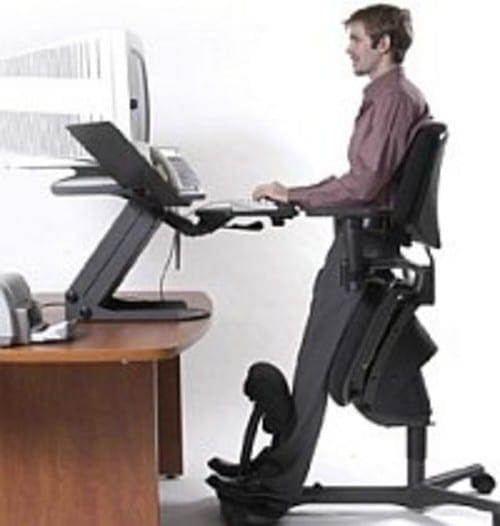
by Dr Alex Jimenez DC, APRN, FNP-BC, CFMP, IFMCP | Posture
Dr. Alex Jimenez takes a look at new concepts on posture and sitting. �Fact: Sitting is the new smoking. �It is highly destructive to the body on many levels. �
Here are some good choices that may assist in reducing postural issues as a result of prolonged sitting.
15 Best Active Sitting Chairs For Better Posture, Productivity And | Source: hobbr.com
Best Office Chair For Posture Home Design Ideas | Source: drgulas.com
Office Chair Back Exercises. Chic Fabulous Office Chairs Design | Source: stormicus.com

13 Best Office Chairs Of 2017 (Affordable To Ergonomic) �? Gear Patrol | Source: gearpatrol.com
Top Good Posture Chairs With BEST OFFICE CHAIR FOR POSTURE OFFICE | Source: juuj.org

What Are The Best Office Chairs For Lower Back Pain? – Quora | Source: quora.com
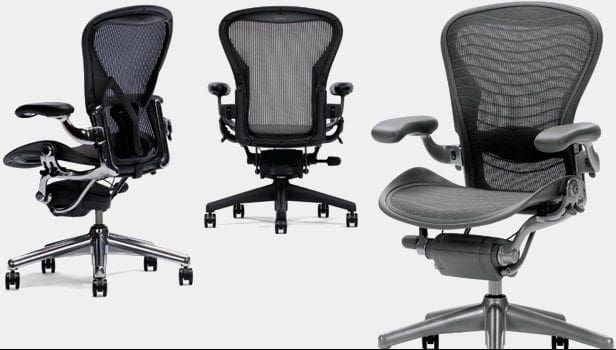
13 Best Office Chairs Of 2017 (Affordable To Ergonomic) �? Gear Patrol | Source: gearpatrol.com

Top Good Posture Chairs With BEST OFFICE CHAIR FOR POSTURE OFFICE | Source: juuj.org

Best Office Chair Reviews 2017 + (Ergonomic Desk Chair Buying Tips) | Source: comfyoffices.com

Best Office Chair For Posture Chair Design Idea | Source: thechairs.us

Best Office Chair For Posture �? Cryomats.org | Source: cryomats.org

7 Of The Best Ergonomic Kneeling Chairs For The Money – The People | Source: thepeople.co.ke
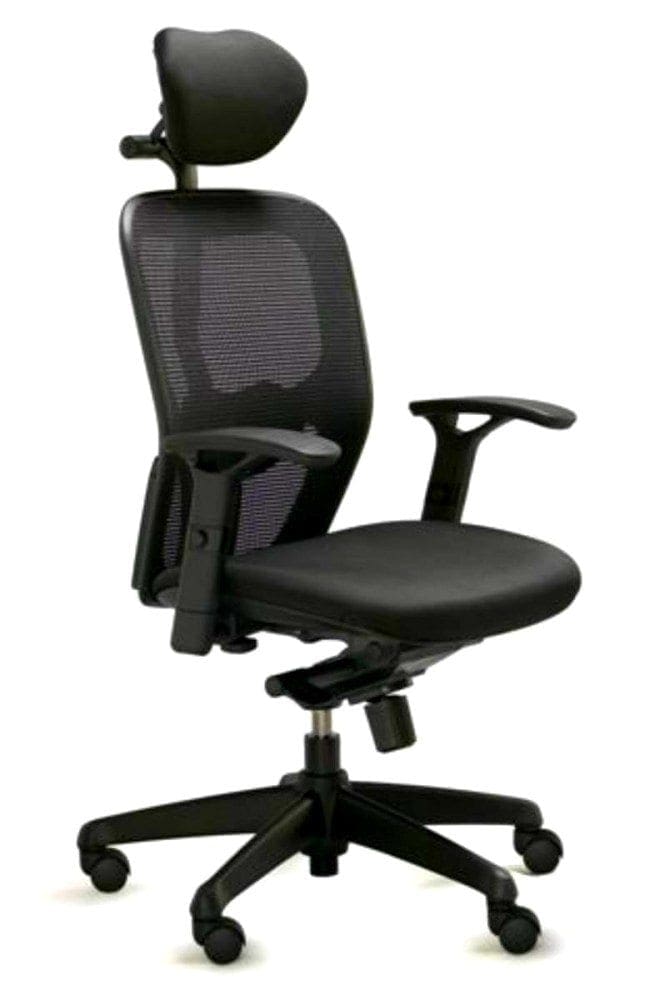
Best Office Chair For Posture Home Design Ideas | Source: drgulas.com
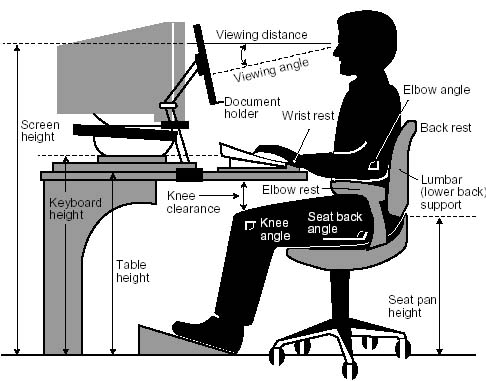
Best Ergonomic Office Chairs Under 200 Dollars – Online Fanatic | Source: onlinefanatic.com

Best Office Chair For Posture P50 Chair Design Idea | Source: thechairs.us
Related to Best Chair For Posture
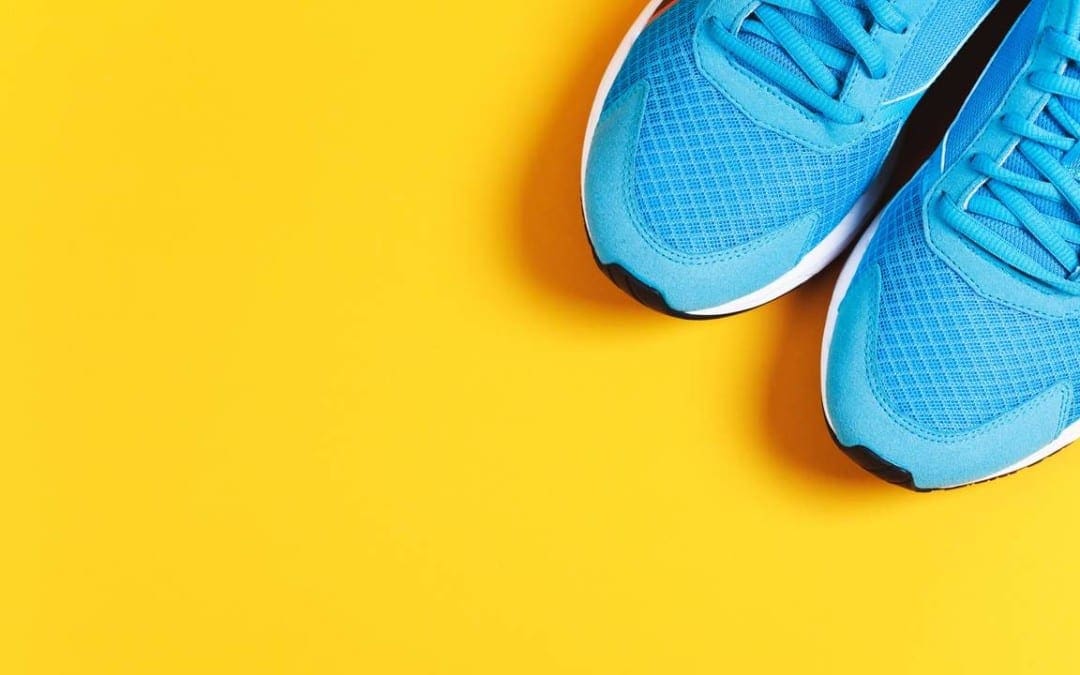
by Dr Alex Jimenez DC, APRN, FNP-BC, CFMP, IFMCP | Fitness, Health, Wellness
This article originally appeared on Time.com.
Compression tights are the latest in athletic performance wear, and some runners swear they improve their performance by helping them to run longer, faster and even recover more quickly with less soreness. But does science back up those beliefs?
In a study presented at the American College of Sports Medicine�s annual meeting, researchers put the latest compression-wear to the test. In a study funded by Nike, Ajit Chaudhari, from the physical therapy department at Ohio State University, and his colleagues tested two prototype compression tights provided by the company. Nearly 20 experienced male distance runners agreed to run at nearly their maximum ability wearing three different outfits: running shorts, low-compression tights and high-compression tights. The high-compression gear was the most compression allowed before being classified as a medical device (which is how some compression socks designed to treat circulation conditions are categorized.)
RELATED: Dead Butt Syndrome Is One More Reason You Shouldn�t Sit All Day
Because compression tights are supposed to keep muscles from vibrating too much�the oscillation is what experts believe causes muscle fatigue and damage to fibers�Chaudhari also measured how much vibration the runners� leg muscles experienced by using special reflectors that could record even the smallest movements. To see how the different outfits affected the runners� performance, the researchers also measured the strength of leg muscles and asked the runners to jump as high as they could before and after the 30-minute run.
It turns out that there were no changes in the runners� jump height or strength whether they wore the running shorts, the low-compression or the high-compression tights. �What we found, when we tested them after a 30-minute high intensity run, was that we don�t see any real effects of the compression tights,� says Chaudhari. �I would say that it�s one strike against expecting improvement in performance from compression tights. We don�t see any evidence that they result in improvement in performance, so for someone who is wearing the tights specifically to try to improve performance, I�d say there isn�t any evidence that they are worth the time or money.�
RELATED: 3 Strength Moves You Probably Aren’t Doing�But Should Be
In a statement, Nike said: �Our goal is to better understand all aspects of human performance. The effect of compression products on performance is one of many areas we study and an area that is often studied by other researchers. The Ohio State University study, which focused on 17 athletes for up to 30 minutes per athlete, produced an interesting data point that delivered an additional perspective on the study of compression tights. Our role is to take athlete feedback and data from studies like this to develop world-class products for athletes at every level.�
Muscle fatigue is one of the major drivers of injury. As their muscles get tired, runners tend to lose their form, and that�s when joints and muscles get misaligned and injuries can occur. Compression tights were thought to stave off that fatigue by keeping vibrations to a minimum, but that theory hadn�t really been tested.
These latest results suggest that compression tights may not be the answer to reducing fatigue. Chaudhari did document that the compression reduced vibration of the muscles; it�s just not clear that the reduction in vibration had any effect on fatigue. It�s possible, he says, that the 30 minutes of intense running wasn�t enough to bring the muscles in these experienced runners to the tiring point. But that�s unlikely, since the runners did start to breathe more heavily and experience faster heart rates, which indicated they were working harder. (Some of the runners couldn�t run for the entire 30 minutes at the heightened intensity.)
There may also be other reasons why people prefer compression tights. For some runners, the extra support helps them run longer or feel more comfortable, and that�s important to performance. They may also keep the legs warm, which some runners prefer.
�If they make you comfortable, they could help you run further,� Chaudhari says. �But if somebody is thinking, �gosh, I need to set personal records and I�ll use the tights because I believe they will help my performance,� you have to go in knowing that it�s kind of a shot in the dark.�
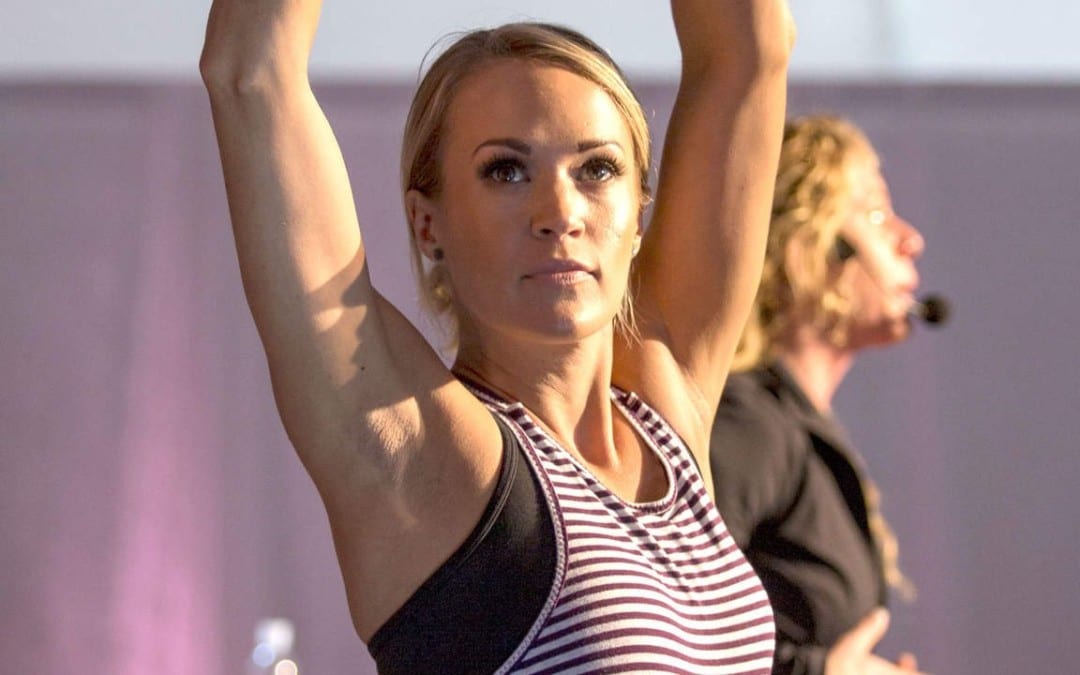
by Dr Alex Jimenez DC, APRN, FNP-BC, CFMP, IFMCP | Chiropractic
This article originally appeared on People.com.�
Before having her son 2-year-old son Isaiah, Carrie Underwood would work out six or seven days a week, but she doesn�t put pressure on�herself to maintain such an intense workout schedule anymore.
�It just happens if and when it happens,� Underwood, 34, told PEOPLE of her new approach to working out at the CALIA by Carrie Underwood Summer Kick-Off event in Malibu on Friday. �I�ve gotten a lot better at doing what I can when I can, but also cutting myself a little slack. You have to!�
That means squeezing in a workout when it�s doable.
RELATED:�Carrie Underwood’s Trainer Erin Oprea Shares the 4 Best Moves to Tone Your Arms
�Now it�s like, �Okay, I have 20 minutes. What can I do in 20 minutes?’� she says. �I can go run for a little while, I can go do some tabata rounds, I can do something.�Sometimes I�m like, my workout today is going be running around after my kid. If we�re going to go to the park, why not run there and push him in the stroller?�Then I get a good cardio session to and from, and then he gets to play, so everybody wins.�
If she does have a little more free time, she�ll�do�a full tabata workout.
�I �play cards� a lot ��I assign different exercises to each suit, and I sit�down at breakfast and plan out what each suit�s going to be,� she says.
Her other go-to activities are running and group exercise classes, like Barry�s Bootcamp.
�I love just putting headphones in and going for a run,� says Underwood. �I feel so good when I get home, especially when it�s hot. I�m one of those weirdos that likes to run when it�s super hot outside! Or classes. I find myself competing with other people in the room. I�m like, �Oh she�s good, I want to be like her!� I try to �beat� someone in the class. They have no idea we�re competing!�
RELATED:�Carrie Underwood Works Out With New Gym Buddy: Her Son!
The singer says finding time for herself is�possible thanks to family support.
�It helps having a supportive husband and a great unit around me,� she says. �You have to sit down and talk to those around you because I feel like I�m a better mom, a better wife, a better friend when I feel good about myself. It�s endorphins and all that stuff that�s being released, too. No bad things can come out of taking care of yourself!�
And having her own fashion line of workout gear is extra motivation to hit the gym.
�I used to go to the gym in ratty old sweats, but if you already feel good going into your workout, it just kind of gives you that little extra lift,� she says.
Underwood says her drive to work out comes from herself, and not from external pressures to look a certain way.
�It�s all about realizing why you do it,� she says. �I want to be a great mom and I want to be around for him for as long as I possibly can. I want to feel good about myself, I want to set that example for my child and make that a priority, because he�s watching. He�s a busy guy, so I need to keep my energy levels up to be able to play with him and chase him around. So it�s for me and my family and for feeling good about myself. Sometimes you have to remind yourself, but it helps to just say, �It�s not for everybody else, it�s for me.� �




























